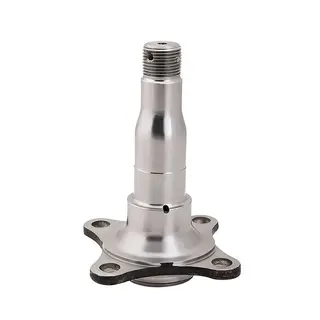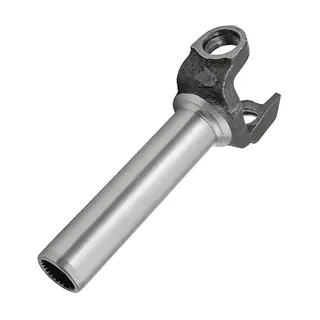In modern manufacturing, forging technology, as a key process in metal processing, has been constantly evolving and innovating. Isothermal forging technology, as an upgraded version of the traditional die forging process, is gradually becoming the focus of the industry with its unique advantages and excellent performance. This article will delve into the principles, advantages, application fields, and comparison with conventional forging technology to help readers fully understand this emerging process.
As the name suggests, isothermal forging is an advanced forging process in which both the die and the billet are heated to the forging temperature, and the deformation process is completed within a temperature range where the variation is extremely small. Compared with traditional forging processes, the core of isothermal forging lies in maintaining a high degree of consistency between the temperatures of the die and the billet, thereby avoiding uneven deformation and additional deformation resistance caused by temperature differences.
In traditional forging, whether it is die forging, free forging, integral forging, or local forging, there is often a large temperature difference between the billet and the die. This temperature difference causes the surface of the billet to cool rapidly, increasing flow resistance and deformation resistance, while making the internal deformation uneven, which in turn affects the final product's quality and performance. Isothermal forging solves this problem by precisely controlling the temperature of the die and the billet, allowing the billet to be formed under conditions where the temperature remains basically unchanged.
The process range of isothermal forging covers various forms such as isothermal die forging and isothermal extrusion, and its metallurgical boundary is defined by the recrystallization temperature. Specifically, isothermal forging is usually carried out above the recrystallization temperature of the metal, and this temperature range is called hot forging. During the hot forging process, cold deformation strengthening and recrystallization coexist, which belongs to dynamic recrystallization. In contrast, cold forging is a forging process performed at room temperature.
After understanding the principle of isothermal forging technology in depth, we cannot help but ask: What unique advantages does this technology have compared with traditional forging processes? Next, let us explore the advantages of isothermal forging technology and the reasons why it is highly favored in modern manufacturing.
During the isothermal forging process, the deformation change of the billet in the final forming stage is relatively slow, which allows operators to control the degree of deformation more precisely, thereby achieving near-zero allowance forging accuracy. This high-precision forming method not only reduces the waste of metal materials but also lowers the cost of subsequent machining. For example, the world's largest 300 MN isothermal die forging hydraulic press owned by Triangle Defense Company can meet the requirements of isothermal precision die forging for high-precision and complex structural parts such as turbine disks for aircraft engines.
In conventional forging, due to the temperature difference between the billet and the die, the surface of the deformed metal cools rapidly, resulting in a significant increase in flow resistance and deformation resistance. Isothermal forging effectively solves this problem by maintaining consistent temperatures between the billet and the die. Under isothermal conditions, deformation resistance can be reduced to 1/10 to 1/5 of conventional die forging. This means that larger and more complex forgings can be formed on existing equipment, while high-precision and complex-shaped forgings can also be precisely formed.
Isothermal forging not only makes the internal structure of the billet more uniform but also gives the forging excellent mechanical properties due to the high energy conversion rate during the forging process. During isothermal forging, due to the uniform deformation temperature, the metal can maintain a relatively uniform and fine equiaxed grain structure. This microstructure provides the product with characteristics such as low yield strength, low-frequency fatigue resistance, and high stress corrosion resistance, significantly improving the service life and reliability of the forging.
Although the mold structure of isothermal forging is complex and the heating cost is high, its economic benefits are very significant in the long run. Firstly, isothermal forging can reduce machining allowance, improve product dimensional accuracy, and thus reduce metal material consumption. For example, when producing the same turbine engine part, the raw material used for isothermal forging is only about one-third of that used for conventional hot die forging. Secondly, isothermal forging usually completes forming in one process, requiring only one set of molds, whereas conventional hot deformation generally requires multiple processes and multiple sets of molds. This not only reduces mold costs but also improves production efficiency.
During isothermal forging, the mold works under quasi-static load, low pressure, and no alternating thermal stress conditions, and a series of lubricants with excellent process and performance can be used. These conditions make the mold's service life higher than that of conventional hot deformation molds. In addition, the billet heating temperature during isothermal forging is 100 to 400°C lower than that of conventional hot deformation, and the heating time is shortened by 1/2 to 2/3, thus reducing defects such as surface oxidation and decarburization of the billet and further improving the mold's service life.
To understand the advantages of isothermal forging technology more intuitively, we can compare it with conventional forging technology.
In conventional forging, due to the temperature difference between the billet and the die, deformation resistance is high, requiring greater forging pressure. Isothermal forging, by maintaining consistent temperatures between the billet and the die, significantly reduces deformation resistance, making the forging process easier to control and lowering equipment energy consumption.
In conventional forging, due to uneven deformation temperatures, differences in internal structure and properties easily occur in the metal, affecting the final product's performance. Isothermal forging, on the other hand, allows the billet's internal structure to become more uniform, forming a fine equiaxed grain structure, thereby improving the product's mechanical properties and service life.
Conventional forging molds operate under conditions of high temperature, high pressure, and alternating thermal stress, resulting in shorter service life. Isothermal forging molds operate under quasi-static load, low pressure, and no alternating thermal stress conditions, significantly extending their service life and reducing mold costs.
Conventional forging usually requires multiple processes and multiple sets of molds, resulting in lower production efficiency. Isothermal forging generally completes forming in one process, requiring only one set of molds, achieving higher production efficiency while reducing machining allowance and production costs.
In conventional forging, uneven deformation results in lower product accuracy and requires a large amount of subsequent machining. Isothermal forging can achieve near-zero allowance forging accuracy, reducing subsequent machining allowance, and improving product dimensional accuracy and surface quality.
Due to its unique advantages, isothermal forging technology has been widely used in many fields, especially in industries such as aerospace, automobile manufacturing, and shipbuilding, which have extremely high requirements for precision forming and high-performance materials.
The aerospace industry has extremely high requirements for material performance and precision. Isothermal forging technology can produce complex-shaped, high-precision forgings such as turbine disks, blades, integral turbines, and rotor impellers for aircraft engines. These components not only need to withstand high temperatures, high pressure, and high stress but also require excellent fatigue resistance and corrosion resistance. Through precise control of the deformation process, isothermal forging technology can meet these stringent requirements, significantly improving the quality and reliability of aerospace components.
In automotive manufacturing, isothermal forging technology is used to produce high-strength, lightweight components such as engine crankshafts, connecting rods, and transmission gears. During the isothermal forging process, these components can obtain uniform internal structures and excellent mechanical properties, thereby improving vehicle performance and fuel efficiency. In addition, isothermal forging technology can also reduce machining allowance, lower production costs, and improve production efficiency.
In the shipbuilding industry, isothermal forging technology is used to produce key components such as propulsion propellers and ship shafts for large vessels. These components need to have high strength, high toughness, and good corrosion resistance. Isothermal forging technology ensures that these components can operate stably for a long time in complex marine environments, significantly improving the safety and reliability of ships.
As an upgraded version of the traditional die forging process, isothermal forging technology, with its unique advantages and excellent performance, is gradually changing the face of modern manufacturing. By precisely controlling the temperatures of the die and the billet, isothermal forging technology can significantly reduce deformation resistance, improve material performance, save costs, extend mold life, and improve product accuracy. In industries such as aerospace, automobile manufacturing, and shipbuilding, isothermal forging technology has been widely applied and has achieved remarkable economic and social benefits.



